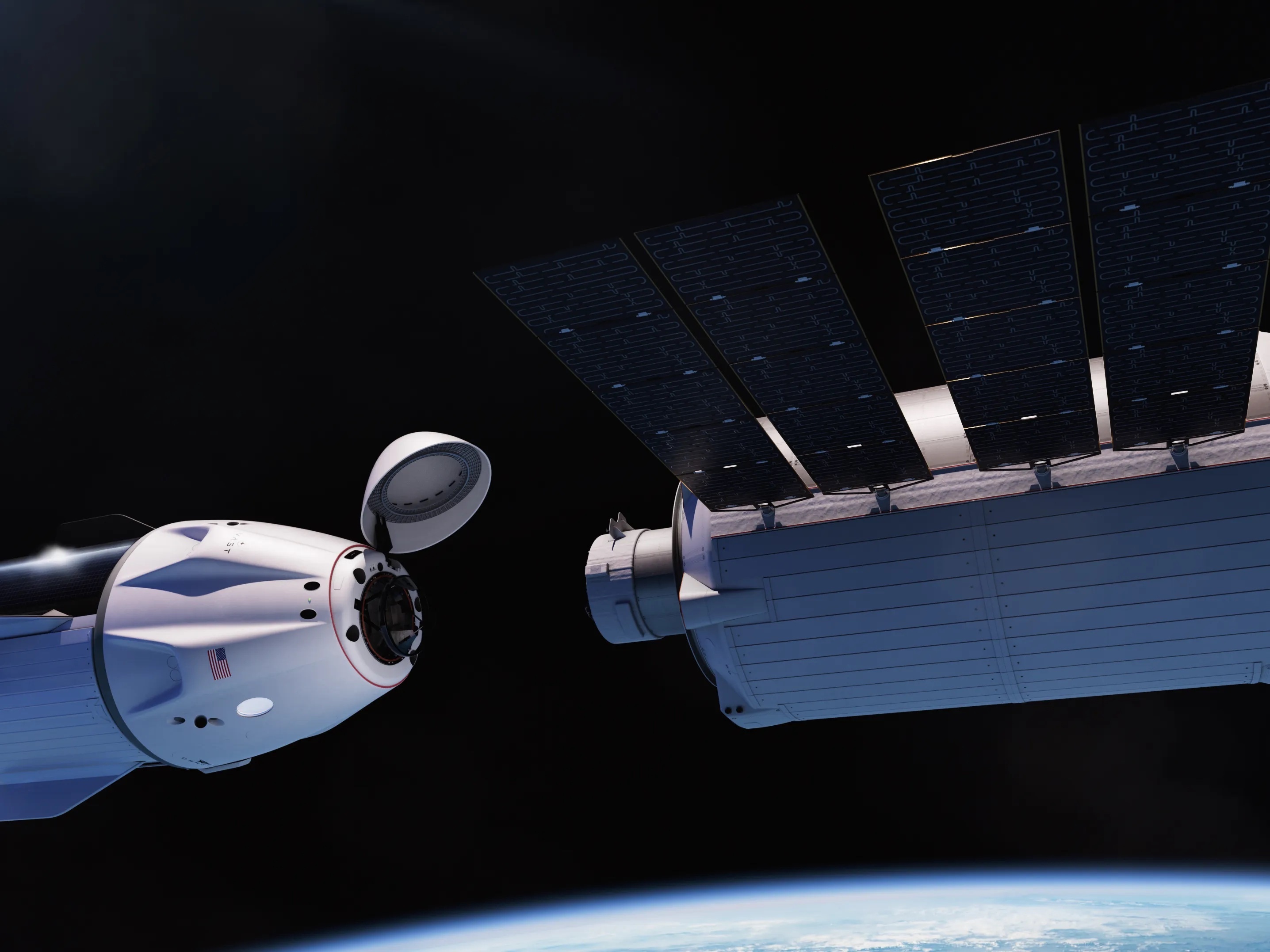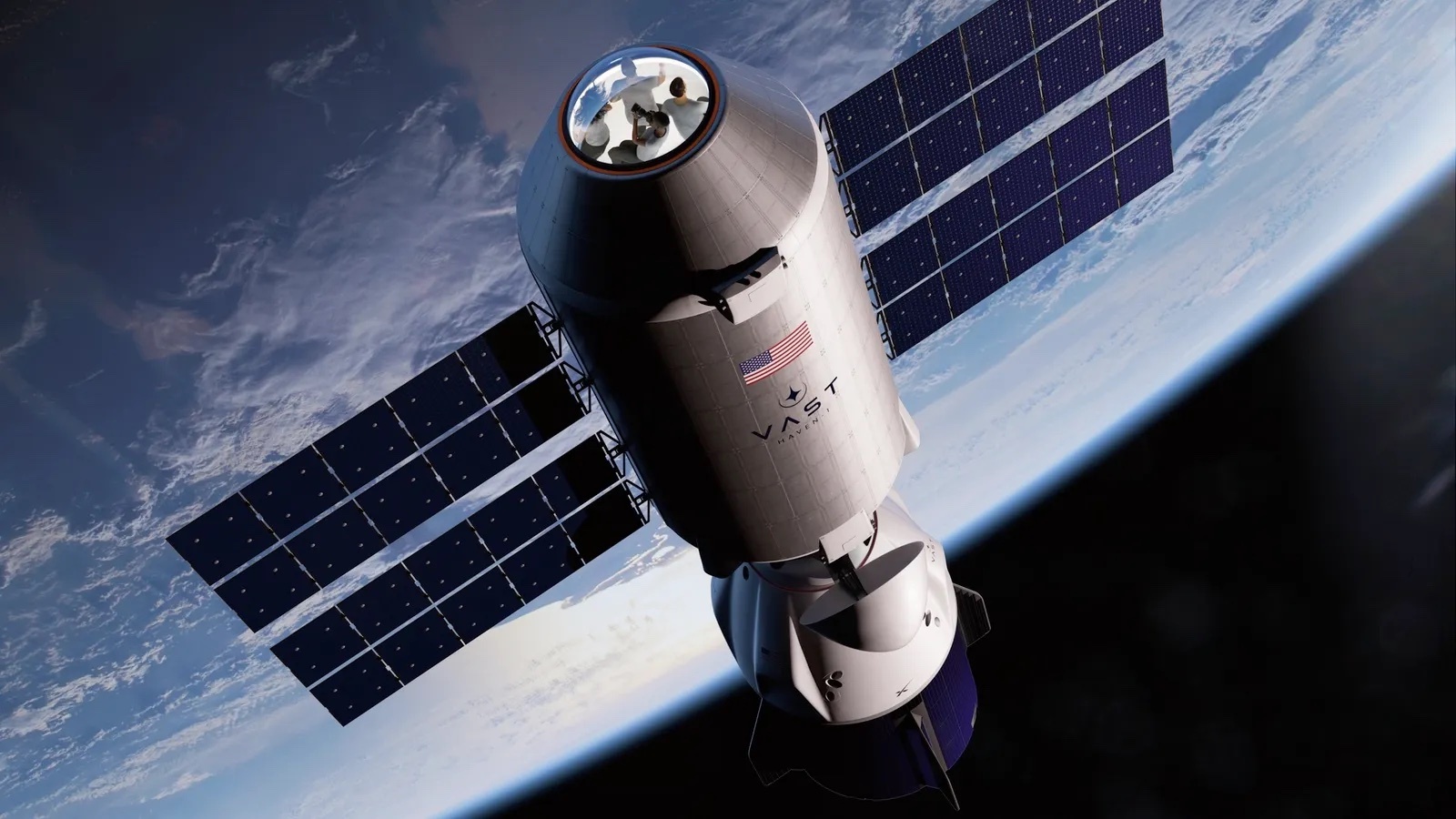12.05.2023

Wanted: AirBnB-like situation somewhere in the greater cosmos, not too far from Earth with a gravity simulator for about 30 days in space.
OK. So maybe it won't be all that, but VAST Space, a California-based startup, may be cooking up something similar in about two years.
The company announced today (May 10) that it plans to launch its Haven-1 outpost the first private commercial space station to Earth orbit.
Haven-1 Key Features
Here are the key features of the Haven-1 Space Station which is set to launch aboard a SpaceX Falcon 9 rocket no later than August 2025.
- Compatible docking with the SpaceX Dragon spacecraft.
- Extend the on-orbit duration of commercial Dragon spacecraft human spaceflight missions for up to 30 days for four astronauts.
- Science, research, and in-space manufacturing opportunities - up to 1000 W of power, 24/7 communications, and up to 150 kg of pre-loaded cargo mass in Haven-1.
- Opportunities for lunar artificial gravity by spinning.
- Fully-independent and equipped with all consumable needs
- Privacy and control of your time in orbit.
- Large window dome for viewing and photography.
- Always-on internet via onboard WiFi.
- Room to stretch and rest.
Haven-1 Specs
- Diameter: 3.8 meters (About 12.5 feet)
- Height: 10.1 meters (33 feet)
- Mass: 14,000 kilograms (More than 15 tons)
- Power: 15,000 W
- Crew capacity: 4
What is VAST-1?
VAST-1 is the first mission to crew the Haven-1 orbital outpost. The crew will fly on a SpaceX Crew Dragon capsule launched atop a Falcon 9 rocket. The mission will last up to 30 days. SpaceX will provide astronaut training, spacesuits and other similar services.
What's the price?
VAST Space has not announced a ticket price for the first or second planned missions to the outpost, but reservations and inquiries can be made on the company's website.
Are there plans for another outpost?
Yes. Haven-1 will eventually become a module in a larger space station the company will be constructing in orbit.
Quelle: Florida Today
+++
Vast announces plans for first commercial space station

Vast says its Haven-1 module, launching as soon as August 2025, will be able to support four people for up to 30 days at a time. Credit: Vast
WASHINGTON — Space station startup Vast has announced plans to launch what it bills as the first commercial space station as soon a 2025, a free-flying module that will be visited by Crew Dragon missions.
Vast announced May 10 it had signed a contract with SpaceX for the Falcon 9 launch of a module called Haven-1, scheduled for no earlier than August 2025. That will be followed by a Crew Dragon mission called Vast-1 that will transport four astronauts to the module for a stay of up to 30 days.
Haven-1 is a precursor for much larger space stations Vast is proposing to develop that would be launched with SpaceX’s Starship. “We believe that it’s more important that we demonstrate that we can have the first but also a full space station system in orbit,” said Max Haot, president of Vast, in an interview. Haot joined Vast in February when it acquired his space transportation startup, Launcher.
The module, as currently designed, is 10.1 meters long and 3.8 meters in diameter, sized to fit inside a standard Falcon 9 payload fairing. The 14-ton module will provide 70 cubic meters of pressurized volume and 15 kilowatts of power. The module has a docking port at one end and a large window at the other.
The module would be launched with the payloads and consumables needed by the visiting crew. He said the focus of the design was simplicity so it could be developed quickly and safely. That includes keeping Dragon active while docked to Haven-1, making use of its life support systems. “We are divide-and-conquering the life support system between us so that we can do it quickly.”
Vast, which had disclosed few details about its space station plans before this announcement, is just starting to market the facility to potential customers. International space agencies represent the largest potential market, Haot said. Others include individuals and companies interested in conducting research or in-space manufacturing.
The company has not yet built any hardware for the module but is working on prototypes of the structure at its Long Beach, California, headquarters, which includes a 11,100-square-meter manufacturing facility. Some key subsystems, such as avionics and propulsion, will be based on versions it is flying on Orbiter space tugs originally developed by Launcher and which Vast plans to continue flying.
He argued the schedule that calls for launching Haven-1 as soon as August 2025 is ambitious but feasible, and that SpaceX supports it. “We both believe that it can and will happen in that timeline.”
If Vast is successful, it would jump ahead of rivals that have NASA support for developing commercial space stations intended to succeed the International Space Station by the end of the decade. Three teams, led by Blue Origin, Northrop Grumman and Voyager Space, won funded Space Act Agreements from NASA’s Commercial Low Earth Orbit Destinations, or CLD, in late 2021 to support design work on commercial stations. A fourth company, Axiom Space, has an agreement with NASA to install commercial modules on the ISS as a precursor to a commercial station.
Vast would like Haven-1 around the time that Axiom expects to add its first commercial module to the ISS. Haot said he believes the simplicity of a free-flying module will win out over the complexities involved with a module that is part of the ISS, including working with the station’s various partners. “If it’s very complicated and there’s a lot of requirements and you don’t have the flight manifested, we think we will beat it,” he said.
Vast had not been founded at the time of the original NASA CLD competition, but Haot said competing in later phases of that program is a priority. “We see NASA as our biggest opportunity, as our largest customer,” he said. Having Haven-1 in operation, he said, would give Vast an advantage over competitors yet to fly. “We’re not going to send you renders or prototypes in a warehouse. We have flight hardware.”
The contract with SpaceX covers one Crew Dragon mission to Haven-1 with an option for a second. Haot said the module is designed for up to four missions of as long as 30 days each.
Haven-1 is a stepping stone to the company’s long-term vision of large stations that can rotate, generating artificial gravity. Its product roadmap includes a “spinning stick” space station 100 meters long made of modules seven meters in diameter launched on Starship, capable of hosting 40 people. That station would be developed by the 2030s.
“You can’t really go from zero to building a Starship-sized thing that can hold 40 people,” said Jed McCaleb, founder and chief executive of Vast who is funding the company’s development. “You need to take incremental steps and this is one that seems very doable.”
He said the company might consider building a second Haven module depending on market demand and progress on the larger modules. “It also depends on Starship’s timeline,” he added. “If it’s ready sooner, then we will definitely target that.”
Quelle: SN

